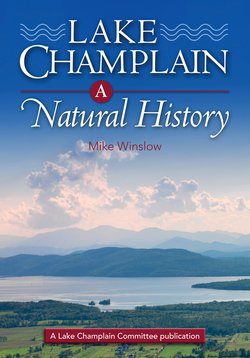Source:
by Mike Winslow (2008).
Reproduced with permission from the
the watershed
A Tale of Two Bays
This following essay is an excerpt from Lake Champlain: A Natural History by Mike Winslow. It is particularly helpful in understanding the water quality problems specific to St. Albans Bay. SAAWA is grateful to Mike Winslow and the Lake Champlain Committee for allowing us to reproduce it here.
It was the best of times, it was the worst of times. So begins Charles Dickens’s classic tale that weaves a story of eighteenth-century London and Paris. In that statement and the ensuing paragraphs, Dickens tries to capture the sense that all times are essentially the same, but those living in a particular time period feel compelled to describe their situation only in superlatives. Lake Champlain, too, is often described in superlatives, both positive and negative. It is “the jewel of New England,” according to Senator Leahy of Vermont. Meanwhile, the Quebec environmental minister called the northwest portion of the lake an “ecological disaster.” How can these two people be talking about the same water body?
Willsboro Bay on the New York shore and St. Albans Bay on the Vermont shore embody the contradictions and superlatives inherent in Lake Champlain. Both cover about 7.5 square miles and would seem at first glance to be very similar. Yet each year St. Albans Bay experiences algae blooms and reports of deplorable water quality, while Willsboro Bay remains clear and blue. Probing beyond a first glance reveals great differences in the two bays.
Three critical factors that make St. Albans Bay more susceptible to algae blooms are average wind direction, water depth, and the amount of nutrients in the water column.
In the summer, prevailing winds are from the south. Willsboro Bay opens to the Main Lake and the north, and the prevailing winds promote water exchange. St. Albans Bay opens to the south, so prevailing winds inhibit water exchange. In addition, a south wind on St. Albans Bay will drive algae blooms onto shore, where they are even more noticeable.
Differences between the depths of the bays influence the summer water temperatures. Two bays with about the same surface area but differing in depth have vastly different quantities of water in them. The shallow bay, with much less water, heats and cools more quickly than the deep bay. Warm summer temperatures invite algae blooms like a rotten cantaloupe calls fruit flies.
Willsboro Bay is deep, averaging fifty feet and plunging to nearly two hundred feet at its deepest. Although St. Albans Bay reaches a respectable maximum depth of sixty-four feet, the average is only 11 feet. That is shallow enough for sunlight to reach the bottom in many locations and to allow extensive growth of weed beds in addition to the algae.
Temperature and wind alone are not sufficient to explain the algae blooms, however; algae also need nutrition. The principal factors that influence the amount of nutrients available are the shape and size of the bays’ basins and land uses in those basins.
Water bodies collect nutrients from the surrounding land. In flat areas there is more land to contribute nutrients than in steep areas. Therefore, one finds more nutrient-rich lakes in the flat Midwest than in the mountainous Adirondacks. The landscape around St. Albans Bay is relatively flat. As a result, every acre of the bay receives water from over seven acres of land. While this ratio is not particularly high compared to other sections of Lake Champlain, it is substantially higher than the ratio in Willsboro Bay, where each acre receives water from only about three acres of land.
The topography of the two catchments has guided development patterns as well. Not surprisingly, people fine it easier to farm and settle in flat areas, so the St. Albans Bay basin is much more densely populated, containing a city of over 7,600 people and numerous farms. Meanwhile, steep mountains around Willsboro Bay have limited development and there are only about 1,900 year-round residents.
The concentration of people and cows in the St. Albans Bay basin means more nutrients are produced. Through many years, the wastewater-treatment facility for the City of St. Albans discharged very large amounts of nutrients into the bay, until an upgrade in 1987 resulted in substantial reductions. Agricultural sources in the drainage basin now account for the majority of nutrient loads. Unfortunately, efforts to minimize pollution from these sources have led to only marginal reductions. Over many years, the excess nutrients have built up in the bay’s sediment and are slowly released each summer, adding to nutrients supplied annually from the basin.
The vast majority of Willsboro Bay’s drainage basin is forested, and forest lands export few nutrients. There are relatively few agricultural acres in the basin, and the main population center in the area, the town of Willsboro, is oriented around the Boquet River, which does not even drain to the bay.
The superficial similarities in size between Willsboro Bay and St. Albans Bay are overwhelmed by underlying differences in their basins. Landscape and land use have combined to enhance accumulations of nutrients in the water in St. Albans Bay, and prevent such accumulation in Willsboro Bay. The nutrients combine with the shallower bay’s warmer water to provide an ideal setting for annual irruptions of algae blooms. Thus far, Willsboro Bay has been spared such a fate, as London was spared the revolution that eventually engulfed Paris in Dickens’s tale.


